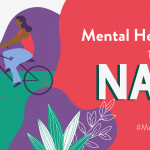Racing outlines plans to ease racecourse restrictions from 17 May
British Racing has set out its plans for beginning to ease racecourse COVID-19 restrictions, ending ‘behind closed doors’ racing from Monday 17 May.
This follows confirmation from the UK Government that the next stage of its roadmap out of lockdown will go ahead as planned, allowing for the return of up to 4,000 spectators at race meetings in England and the return of indoor hospitality.
Changes to the Green Zone
The announcement also marks a significant step in the return to a more traditional racecourse experience, with changes to elements of the existing raceday protocols, including around the size and location of the ‘green’ zone.
Under current proposals, from 17 May the Green Zone will be limited to key indoor working areas only, such as the weighing room, where existing infection control measures will remain in place, including social distancing, entry screening and mandatory face coverings.
On most courses, all other areas including the parade ring and stables will be separated from the Green Zone, with entry screening reduced for trainers, stable staff, the media, and others. This will give owners access to the parade ring to see their horse and speak to their trainer and jockey in a safe and managed environment.
Safety protocols
Social distancing will continue to apply, as required by Government guidelines. Given the mixing of personnel from different zones and the risk of close contact in the parade ring, racecourses will be required to limit numbers entering the area. Face coverings will be mandatory in the parade ring areas and indoors – in line with government guidance – but not elsewhere on course.
These changes will start to be introduced at courses in England initially, with British racing seeking to have the same rules applied in Scotland and Wales. The ability of racecourses to implement the new measures in full will be determined by their size and layout, with some required to take a more phased approach.
Specific arrangements also remain subject to approval from individual local authorities, which license sporting and hospitality events and may impose local variations.
Next steps
Longer-term, British racing, in common with other major sports, is planning for a full return of spectators and further easing of on-course restrictions at the next stage (Step 4) of the UK Government’s roadmap, which is scheduled for 21 June at the earliest.
The Government is not likely to confirm its plans until one week before the changes are scheduled to come into effect, but British racing is liaising with officials at national and local level to press for a return to full crowds.
Racing’s leaders very much appreciate the commitment shown by owners over the past year when their attendance and experience at racecourses has been restricted by the pandemic, alongside the efforts made by participants and officials to observe on-course Covid protocols.
The BHA’s Chief Medical Adviser, Dr Jerry Hill, said:
“Low COVID-19 prevalence, rising vaccination levels and the wider availability of NHS testing have put British racing in a position to ease some of the infection control measures that our sport has followed so diligently since June last year.
“Like other sports, we are taking a measured approach, with incremental changes to balance protecting key raceday personnel – whose absence due to illness or 10-day isolation could impact the ability of the industry to stage fixtures – with the return of a more traditional racecourse experience, particularly for owners and trainers.
“For now, all those going to a meeting, as participants, owners, or racing fans, will still be asked to observe social distancing and other COVID restrictions as in other areas of life. If we can all maintain those responsible behaviours for the next few weeks, it will help speed the return of 100% attendances and the further relaxation and in due course removal of physical COVID-19 infection control measures.
“I want to thank participants in advance for continuing to follow the on-course protocols, particularly around the weighing room complex and other close contact areas like the parade ring. This will help ensure that courses remain safe environments as the number of attendees increases.”


